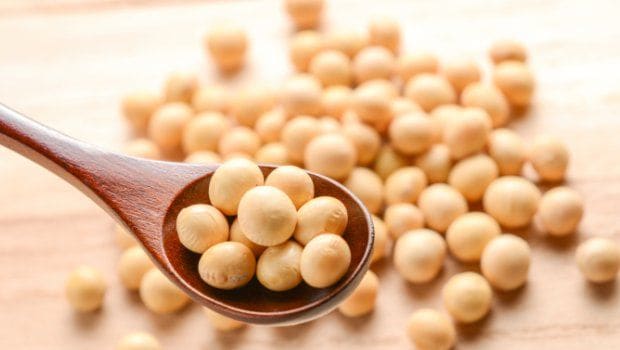Move over milk! Consuming soy protein during childhood can can prevent bone loss in adulthood, a new study in mice suggests.Researchers have found that early dietary nutrition heavy in soy protein isolate can protect against serious bone loss during adulthood.This also is the first time that scientists have used an animal model to show concrete evidence of a protective effect of an early-life soy protein isolate diet on adult bone loss.
"Appropriate early-life nutrition can optimise peak bone mass," said Jin-Ran Chen, a researcher at the University of Arkansas for Medical Sciences."Consumption of soy foods has a variety of health benefits, including amelioration of bone loss during
adulthood," Chen said.Researchers used a very young female rat model. One group of rats was fed a soy protein isolate diet for 30 days (from postnatal day 24 to 55), and then was switched to a regular standard rodent diet until 6 months of age.The rats were altered to mimic postmenopausal bone loss in women to determine the amount of bone loss.The second group of rats was fed a regular standard rodent diet throughout life. This group was also altered to mimic postmenopausal bone loss and analysed to determine bone loss.The research was published in The FASEB Journal.
(This story has not been edited by NDTV staff and is auto-generated from a syndicated feed.)
"Appropriate early-life nutrition can optimise peak bone mass," said Jin-Ran Chen, a researcher at the University of Arkansas for Medical Sciences."Consumption of soy foods has a variety of health benefits, including amelioration of bone loss during
adulthood," Chen said.Researchers used a very young female rat model. One group of rats was fed a soy protein isolate diet for 30 days (from postnatal day 24 to 55), and then was switched to a regular standard rodent diet until 6 months of age.The rats were altered to mimic postmenopausal bone loss in women to determine the amount of bone loss.The second group of rats was fed a regular standard rodent diet throughout life. This group was also altered to mimic postmenopausal bone loss and analysed to determine bone loss.The research was published in The FASEB Journal.
(This story has not been edited by NDTV staff and is auto-generated from a syndicated feed.)
Advertisement
